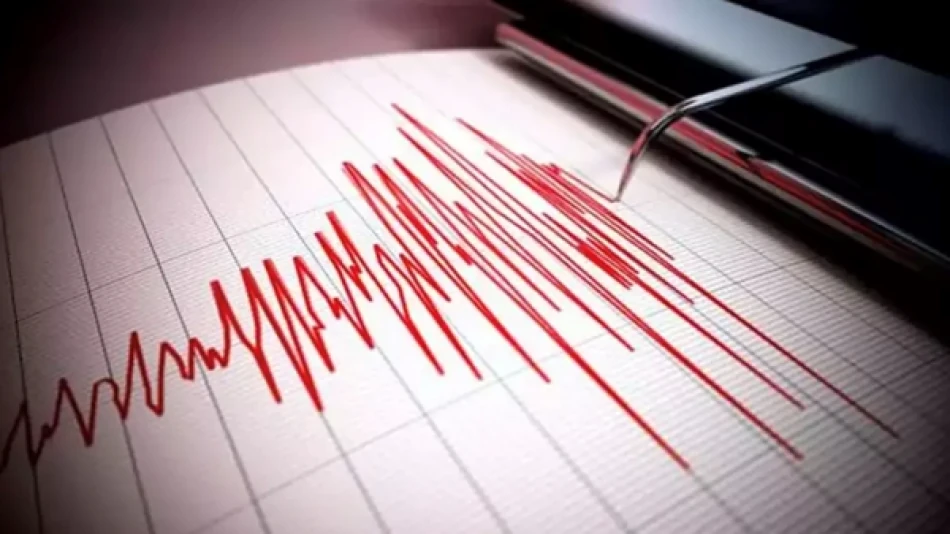
Powerful Earthquake Rattles Mexico, Leaving Trail of Destruction and Concern
5.7 Magnitude Earthquake Strikes Mexico's Oaxaca Region, Highlighting Nation's Persistent Seismic Vulnerability
A moderate earthquake measuring 5.7 on the Richter scale struck the city of Oaxaca in southern Mexico on Saturday, serving as another reminder of the country's position along one of the world's most seismically active zones. The shallow quake, occurring at just 10 kilometers depth, underscores Mexico's ongoing geological challenges as it sits at the intersection of major tectonic plates.
Earthquake Details and Immediate Impact
According to the German Research Centre for Geosciences (GFZ), the earthquake hit Oaxaca with no immediate reports of casualties or significant damage to infrastructure and property. The relatively shallow depth of 10 kilometers typically amplifies ground shaking, making the absence of reported damage fortunate for the region's residents.
Oaxaca, a culturally rich state in southern Mexico known for its indigenous heritage and colonial architecture, has experienced numerous seismic events throughout its history. The city's buildings, many dating back centuries, face particular vulnerability during earthquake events.
Mexico's Geological Reality: Living on the Ring of Fire
Mexico's location along the boundaries of several major tectonic plates makes it one of the most earthquake-prone countries in the Americas. The nation sits where the North American, Pacific, Cocos, and Caribbean plates converge, creating a complex geological environment that generates frequent seismic activity.
The Mechanics Behind Mexico's Earthquakes
The constant movement and friction between these massive tectonic plates builds enormous pressure over time. When this accumulated stress exceeds the strength of the rock formations, it releases suddenly in the form of earthquakes. This process, known as elastic rebound, explains why Mexico experiences both frequent minor tremors and occasional devastating major quakes.
Historical Context and Regional Patterns
Saturday's 5.7 magnitude event falls within the range of moderate earthquakes that Mexico experiences regularly. However, the country's seismic history includes far more devastating events that have shaped its modern disaster preparedness strategies.
The 1985 Mexico City earthquake, measuring 8.0, killed thousands and led to comprehensive changes in building codes and emergency response protocols. More recently, the September 2017 earthquakes in central Mexico, including a 7.1 magnitude event that struck on the anniversary of the 1985 disaster, demonstrated that seismic risk remains a critical national concern.
Oaxaca's Seismic Profile
The Oaxaca region sits particularly close to the subduction zone where the Cocos Plate slides beneath the North American Plate. This geological configuration makes the area especially prone to both shallow crustal earthquakes and deeper subduction-related events. The 2020 magnitude 7.4 earthquake that struck near Oaxaca serves as a recent reminder of the region's seismic potential.
Economic and Social Implications
While Saturday's earthquake appears to have caused minimal immediate damage, Mexico's ongoing seismic activity carries significant long-term economic implications. The country invests heavily in earthquake monitoring systems, building retrofits, and emergency preparedness programs—costs that reflect the reality of living in a seismically active region.
Tourism and infrastructure sectors in regions like Oaxaca must constantly balance preservation of historical sites with modern safety requirements. The state's economy, heavily dependent on cultural tourism, faces ongoing challenges in maintaining its colonial charm while ensuring visitor and resident safety.
Looking Forward: Preparedness in an Unpredictable Environment
Mexico's experience with seismic events has led to sophisticated early warning systems and building codes among the most advanced in Latin America. The country's seismic monitoring network, operated by the National Seismological Service, provides crucial data for both immediate response and long-term risk assessment.
As climate change and urban development continue to evolve Mexico's risk profile, Saturday's Oaxaca earthquake serves as a routine but important reminder of the geological forces that continue to shape the nation. While a 5.7 magnitude event may not make international headlines, it represents the ongoing reality for millions of Mexicans who have learned to build their lives around the unpredictable rhythms of the Earth beneath their feet.
Most Viewed News

 Layla Al Mansoori
Layla Al Mansoori






